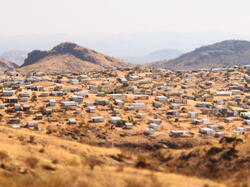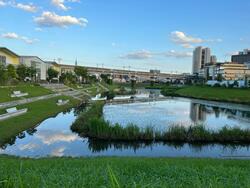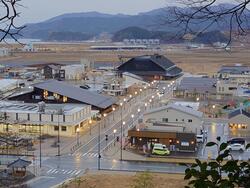
Ono, Haruka
| Affiliation | Department of Architecture and Civil Engineering |
|---|---|
| Concurrent post | Research Center for Agrotechnology and Biotechnology Research Center for Collaborative Area Risk Management (CARM) |
| Title | Associate Professor |
| Fields of Research | Urban Engineering |
| Degree | Doctor of Engineering(The University of Tokyo) |
| ono.haruka.ac@ Please append "tut.jp" to the end of the address above. |
|
| Laboratory website URL | https://www.ono-unit.com/ |
| Researcher information URL(researchmap) | Researcher information |
Research
To realize sustainable and attractive cities, the mission of our laboratory is to explore the potential recommendations on what needs to change at policy, institutional and ground levels from a global perspective. Our research includes: international urban planning; land tenure and management; and territorial design. We encourage students to develop a sound theoretical knowledge as well as practical skills for enabling them to practice in all areas of urban planning and territorial design.
Theme1:Exploring Informal Urbanism: Unlocking the Potential of Grassroots Urban Spaces
Overview
Informal urbanism transcends formal planning frameworks and highlights urban spaces shaped by residents’ ingenuity and resilience. Particularly, in rapidly urbanizing regions such as Africa, Asia, and Latin America, informal settlements and commercial areas have emerged as organic responses to gaps in housing, infrastructure, and public services. Our research explore how residents create, manage, and sustain these spaces, uncovering their innovation potential. By bridging informal practices with formal urban planning, we seek to develop sustainable and inclusive solutions that respect and amplify the voices of local communities.
Keywords
Theme2:Harmony Between Nature and the City: Citizen-Driven Sustainability
Overview
How can urban design and natural ecosystems can coexist? In this study, we explore ways to integrate green infrastructure and ecosystem services into urban environments, fostering harmony between cities and nature. To mitigate climate change and disaster risks and enhance residents' quality of life, we evaluate how natural systems can be woven into urban spaces. Central to our approach is citizen participation, that empowers individuals to conserve and utilize natural resources for sustainable urban living. By combining nature and design, we aim to build future-ready cities that will be both livable and exhibit environmentally responsible behavior.
Keywords
Theme3:Disaster Recovery and Livelihood Reconstruction: Bridging the Gap from Evacuation to Resettlement
Overview
Post-disaster recovery involves more than rebuilding structures; it is about rebuilding lives. We focus on the critical transition from temporary shelters to permanent housing, seeking ways to ensure a seamless and sustainable recovery process. By studying the effect of temporary housing and resulting environments on residents’ long-term recovery, we aim to develop actionable guidelines for urban planning and housing policies. Our goal is to support disaster victims during their journey from evacuation to resettlement, ensuring their dignity, stability, and resilience throughout the process.




